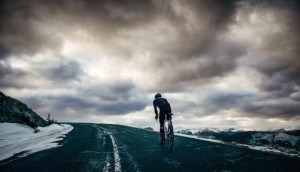Don't overlook your nutrition when training in cold weather
These autumn days are already showing signs of low temperatures. This affects not only our daily activities but also our training sessions. And this is when we ask ourselves what can we do to combat the cold on the bike apart from taking out our winter clothes? In this new post we give you the keys to face the cold through proper nutrition.
Nutrition and cold on the bike: what to take into account?
Training in cold conditions can increase our energy needs. Much of this increase depends on whether thermoregulation is able to maintain skin and trunk temperature through warm clothing, physiological responses such as vasoconstriction and reduced blood flow to peripheral areas, or heat production during exercise. In addition to ambient temperature, factors such as wind chill, ultraviolet radiation and humidity can affect the physiological ability to maintain core temperature in cold conditions.

When this cold exposure is intense enough to cause shivering, energy requirements increase, at least doubling metabolic heat production to maintain core temperature. Few athletes experience shivering when training in cold because they are able to maintain core temperature. However, if shivering occurs, carbohydrate oxidation increases. It is therefore essential not to overlook carbohydrate intake during our training sessions and throughout the day, to avoid fatigue and the consequent decrease in performance resulting from glucose depletion.
RECOMENDADO

Brujulabike wishes you a Merry Christmas

25 cycling gifts ideas to get it right

Do you need a power meter to become a better cyclist?

Our 7 favourite XC hardtails of 2022

MTB XCO European Championships 2022: favorites, schedule and where to watch it live online

Snowshoe XCO World Cup 2022: favorites, schedules and how to watch it
The next step is to control hydration. It is very common to find dehydrated athletes, with body weight losses of around 3-8%, in cold conditions due to several factors:
- Sweat: Although in smaller quantities than in warm conditions, we also sweat in cold weather. And often due to a poor choice of clothing (overdressing) this sweat loss occurs in large quantities.
- Increased water loss in the form of water vapour through respiration due to the cold and dry environment.
- Increased urine generation from cold-induced diuresis.
- Altered sensation of thirst: Although in normal conditions we should not be guided by the perception of thirst as it appears when we have a certain degree of dehydration, in cold conditions the sensation of thirst is even more delayed.
From 1% dehydration onwards there is already a decrease in performance, which is why it is crucial to control this factor. It is also simple to determine by measuring the rate of sweating in different conditions, and it is also simple to do by drinking liquid according to what we have obtained from these sweating rates.
So you know, when you go out cycling in the cold you need to wrap up warm, but you also need to remember to eat and drink.
Article written by José Carlos Núñez López, Graduate in Human Nutrition and Dietetics by the UGR, Official Master in Sports Nutrition by the UCAM and High Performance Sportsman.